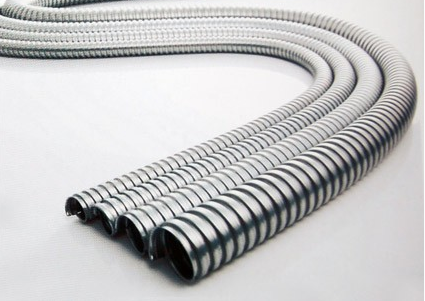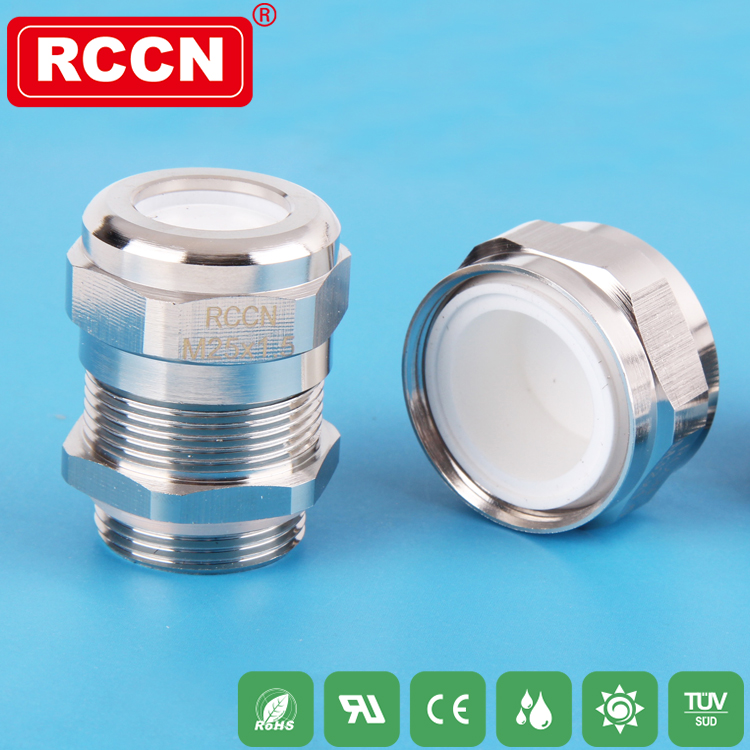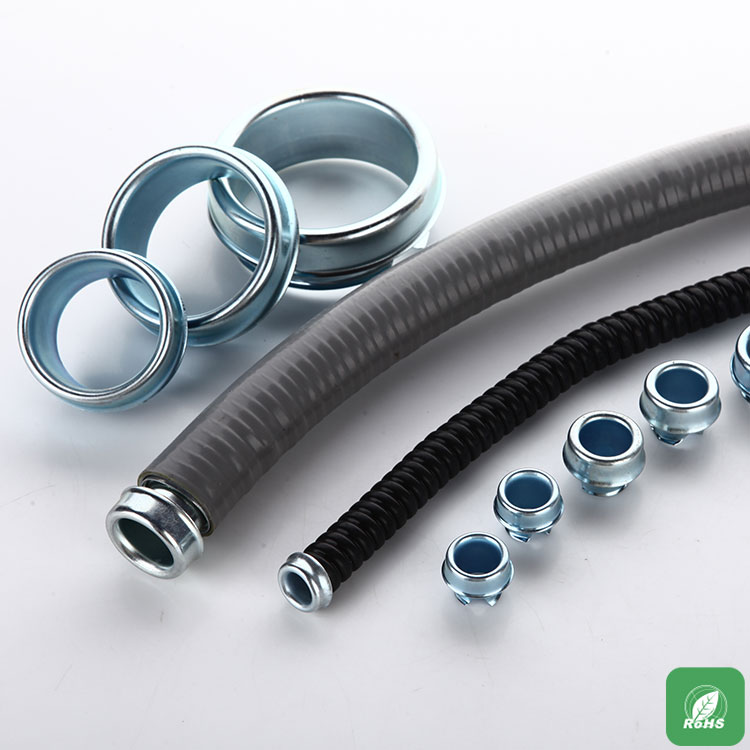1.1 Axial displacement of metal hose after filling internal pressure
Axial displacement refers to the displacement in the length direction of the hose. When the metal hose is filled with liquid for pressurization, an axial thrust is generated. As the pressure increases, the axial thrust increases, thereby causing the hose to axially elongate, when the hose net sleeve is engaged to a certain extent. , the axial elongation stops.
1.2 Metal hose can compensate the lateral displacement of the pipeline
Lateral displacement refers to the displacement perpendicular to the direction of the hose. When the pipe produces lateral displacement, the metal hose can be laterally displaced due to the lateral force due to the structural characteristics, and its displacement force is much smaller than that of the ordinary steel pipe.
1.3 Resonance of metal hoses and tanks
Table 1 Tank shape coefficient
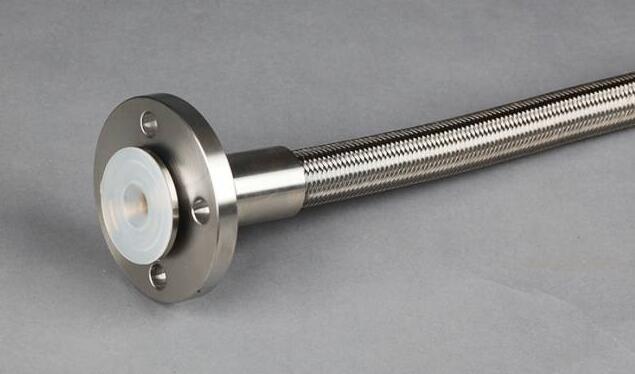
Metal hoses manufactured in strict accordance with the production standard specifications have a basic natural vibration frequency higher than 10 Hz. When the basic natural vibration frequency of the tank is lower than or equal to 7 Hz, the resonance effects of the tank and the metal hose may be disregarded.
2 Metal hose selection
Metal hoses are widely used in the petrochemical industry, but there are also problems in their applications, mainly due to the choice of hose length and improper installation. If the length of the hose is too long, it will cause instability of the system, increase fluid resistance, increase mechanical damage and vibration. If the length of the hose is too short, it will not achieve the purpose of compensation, vibration reduction and noise cancellation. Therefore, determining the length of the metal hose is a top priority. In addition, the following factors should be considered: the nature of the medium, operating temperature, operating pressure, nominal diameter of the connecting pipe, site type, connection method, displacement mode, etc. This article takes the tank outlet pipe as an example.
2.1 Media properties and operating parameters
Table 2 Media properties and operating parameters
2.2 Displacement method
The metal hose is mainly used to compensate for the lateral displacement of the tank, while the axial displacement is compensated by the installation length of the metal hose and the reasonable arrangement of the pipeline system.
2.3 Determination of the length of the metal hose
The length of the metal hose is calculated by the formula (2.3.1)
Where L—the length of the metal hose, mm
Y———the lateral displacement of the metal hose to be compensated, mm, as shown in Table 3;
R actual—the actual bending radius of the metal hose to meet the compensation, mm, as shown in Table 4;
The tank is located in Nanjing City, Jiangsu Province, with a seismic intensity of 7 degrees. The value of Y is 100 mm. The minimum value of R is 4000 mm for 20 days. Considering the pulsating load of one-time bending, R actually takes 5200 mm. 2.3.1) Calculated 1769, determine the metal hose with L=1800 mm.
Table 3 Comparison table of seismic intensity and lateral displacement compensation
Table 4 Relationship between actual bending radius and minimum bending radius of metal hose Download original table
2.4 Natural vibration frequency of the tank
The average diameter of the tank bottom wall is d1=19.024 m, the liquid level height hw=14.3 m, the tank wall thickness t1/3=0.009 m at the liquid level height 1/3, and the parameters are substituted into the formula (1.3.1) and Equation (1.3.2) calculates that the basic natural vibration frequency of the tank is 5 Hz, which is lower than 7 Hz, so the resonance problem is not considered in the earthquake.
In summary, the metal hose of the tank outlet pipe is selected as PN2.0-DN200-WN-304SS, L=1800 mm.
3 Metal hose installation and use management
3.1 Installation type
Proper installation of metal hoses is an important part of ensuring that their performance is fully utilized. The metal hose is usually installed after the root valve of the tank inlet and outlet pipe. The metal hose also has a valve behind it, which makes the tank and the pipe directly form a soft connection, which facilitates the inspection and replacement of the metal hose. The metal hose has a limited ability to compensate for axial displacement under natural conditions. When the installation length is equal to the natural length, it must not withstand strong axial stretching and breakage, resulting in leakage of the pipeline. Therefore, the installation length of the metal hose is less than the natural length to ensure a certain degree of freedom. The installation diagram of the metal hose is shown in Figure 1.
In Figure 1, L is the length of the metal hose, Smin is the minimum installation displacement, and Smin depends on the size, structure, diameter, compensation amount and length of the metal hose, and is commonly used (3.1.1) for estimation.
Figure 1 Metal hose installation diagram
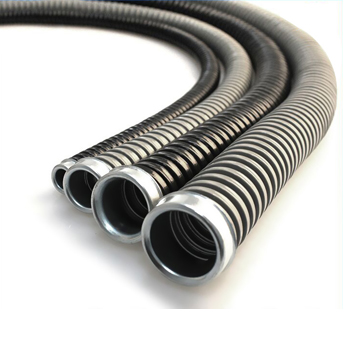
Table 5 Selection of coefficient a
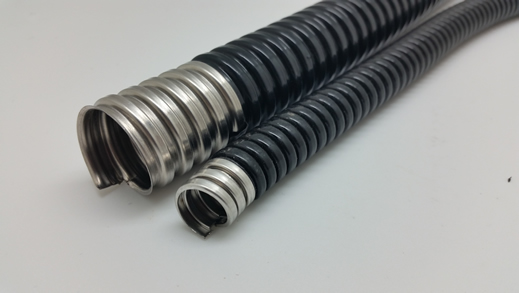
Since the metal hose mainly absorbs the lateral and axial displacement generated by the system, in addition to ensuring the degree of freedom of the metal hose during installation, it can also be absorbed by the arrangement of the pipeline. There are two common piping methods, L type (see Figure 2). And Z-type installation (see Figure 3). L-type installation is more common, the overall layout is neat and tidy, reducing the length of the pipe and reducing the fluid resistance, but the axial stress generated by the pipe will act on the metal hose and the tank nozzle, thus shortening the use of hoses and valves. The life will also damage the nozzle and cause oil leakage. Although the Z-type installation increases the length of the pipe and the number of elbows, the axial displacement of the pipe system can be absorbed by itself, reducing the axial stress on the metal hose and the nozzle, prolonging the service life, and also contributing to the stability of the pipe system. .
From the perspective of safety and service life, the Z-type installation is superior to the L-type, so the Z-type installation is preferred when the plane position allows.
3.2 Installation Precautions
(1) Metal hoses must be inspected prior to installation and problems should be eliminated in a timely manner;
Figure 2 Metal hose L-type installation Figure 3 Metal hose Z-type installation Download the original image
(2) During the hoisting process, measures should be taken to prevent damage to the metal hose;
(3) Short-circuit pipes should be installed after the metal hose to compensate for the deviation of the hose gap size;
(4) Metal hoses made of steel mesh sleeves should be used as much as possible. Because of its high natural frequency, generally 20~30 Hz, far greater than 7Hz, the possibility of resonance between the hose and the tank is extremely small;
(5) When installing, do not forcibly pull and twist, do not knock metal hoses, and should not use strong flange bolts to eliminate installation deviation;
(6) No brackets or supports shall be provided on the metal hose;
(7) The height of the metal hose from the ground or platform should be greater than the lateral displacement compensation;
(8) For pipelines with insulation and cooling requirements, the normal operation of metal hoses shall not be affected.
4 Conclusion
This article combines examples to analyze the various factors affecting the selection of metal hoses. The most important of these is the determination of the length of the metal hose. Too long and too short will cause harm. In addition to comparing the installation methods of the two metal hoses, it is concluded that the Z-type is superior to the L-type installation. Only the proper selection and installation of the metal hose can make it play its due role, thus ensuring the safe operation of the tank.
















 RCCN WeChat QrCode
RCCN WeChat QrCode Mobile WebSite
Mobile WebSite